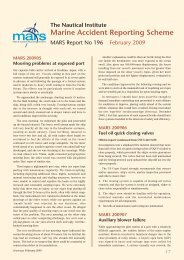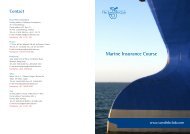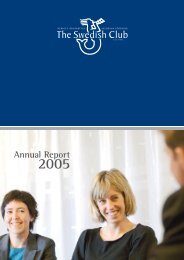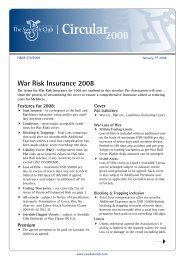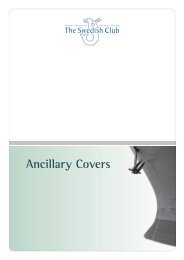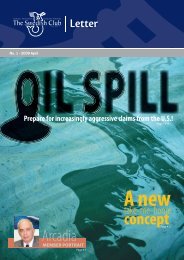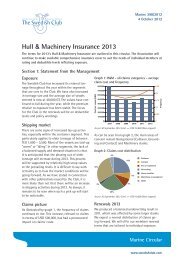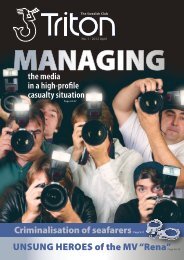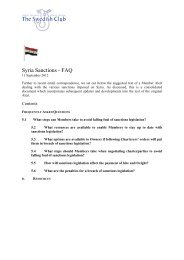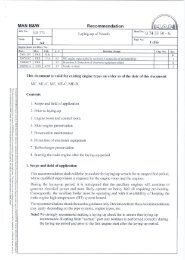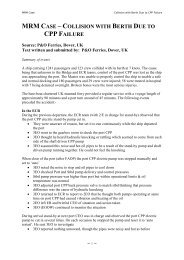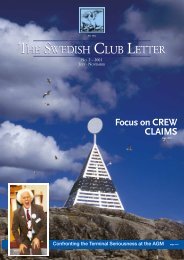List of Correspondents 2013 - The Swedish Club
List of Correspondents 2013 - The Swedish Club
List of Correspondents 2013 - The Swedish Club
You also want an ePaper? Increase the reach of your titles
YUMPU automatically turns print PDFs into web optimized ePapers that Google loves.
Advice to Masters concerning H&M insurance<br />
Grounding<br />
Emergency Guidelines for vessel aground<br />
Document A<br />
Guidelines to Master<br />
<strong>The</strong> following notes are intended to serve as a guideline to the vessel’s master following a<br />
grounding/stranding. It should be noted that every grounding is unique, and that the advice given<br />
here may not be applicable or suitable in each and every case. It is the master’s responsibility to<br />
judge whether the advice given is suitable, safe and executable.<br />
Summary, General Code <strong>of</strong> Practice<br />
Re-floating attempts should only be carried out in a controlled manner, with great care and in<br />
accordance with a carefully worked out salvage plan, unless there is a serious and imminent<br />
threat to the vessel or the crew that calls for immediate action. It is recommended that the<br />
vessel’s master refrain from executing any re-floating attempts under his own command, unless<br />
the master is confident that such a re-floating attempt can be carried out in a safe and controlled<br />
manner without jeopardising the safety <strong>of</strong> the vessel or the crew. <strong>The</strong> reason for this is that a<br />
failed re-floating attempt may cause additional damage to the vessel, and may make the prospect<br />
<strong>of</strong> success for a later re-floating <strong>of</strong> the vessel more difficult or even impossible.<br />
Please follow these detailed guidelines and steps in a grounding situation:<br />
1. Stabilise the vessel’s position<br />
It is essential that the vessel’s position is stabilised to prevent the vessel drifting further aground.<br />
This can be achieved by utilising the vessel’s anchors, and by filling the ballast tanks located in<br />
those parts <strong>of</strong> the vessel that are in contact with the seabed. Bending moment and shear stresses<br />
should be calculated for any such operation in order not to induce stresses into the vessel that<br />
exceed the allowable limits.<br />
2. Determine how the vessel is resting on the seabed<br />
Take soundings from the main deck level (top <strong>of</strong> steel) to the seabed. Deduct the vessel’s moulded<br />
depth from the value obtained. A positive value indicates water under the keel in the area where<br />
the measurement was taken. Ideally, this measurement should be taken at every 10th frame<br />
space, all around the vessel. Make a sketch <strong>of</strong> all measurements, see the example below.<br />
<strong>The</strong> <strong>Swedish</strong> <strong>Club</strong> | 170



